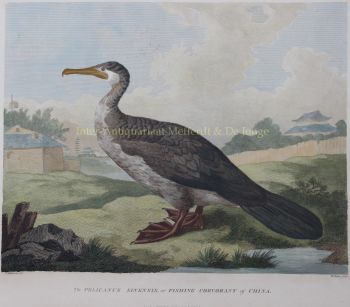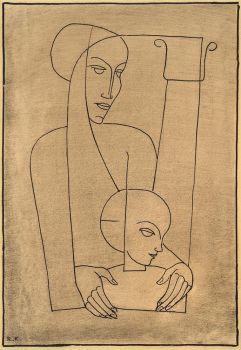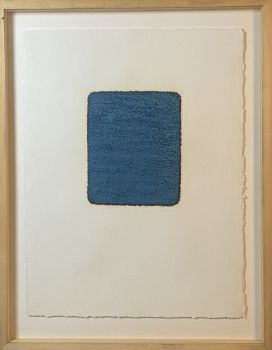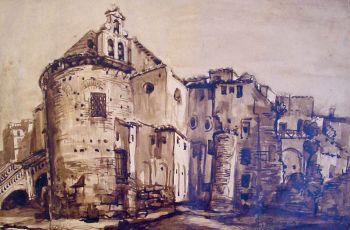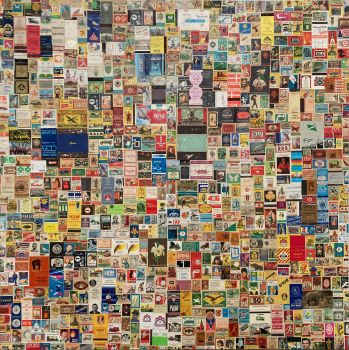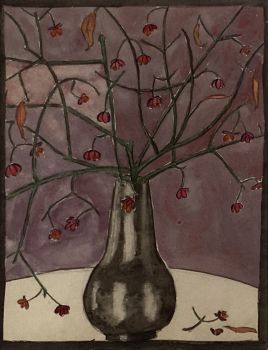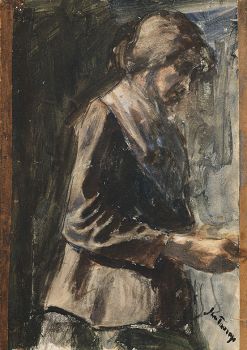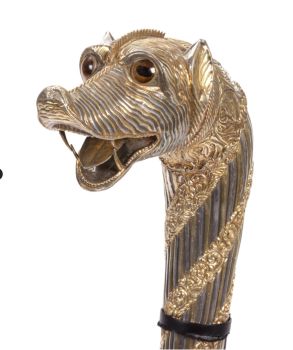Una mujer balinesa con ofrendas 1936
Theo Meier
Papel
57 ⨯ 41 cm
Precio a consultar
Zebregs & Röell - Fine Art - Antiques
- Sobre la obra de arteTHEO MEIER (1908-1982)
“A Balinese woman with offerings”
Signed, dated '36 and annotated Mankok (the name of the sitter) lower left
Sanguine on paper, 57 x 41.5 cm
In a hand-made and hand-painted frame with address: Max Knöll, Herberggasse 4/1, Basel.
Provenance:
Private collection, Basel (acquired directly from the artist)
Private collection, London
Note:
Theo Meier was born in Basel, where he attended art school and became a successful portrait painter. However, after visiting an exhibition in Basel of Tahitian paintings by Paul Gaugin, he decided to follow in Gaugin’s footsteps and go to the South Pacific. To finance his voyage, he founded a club in which every member pledged a monthly sum in return of which they could choose one of Meier’s paintings upon his return.
In 1932, at the age of 24, he embarked on his voyage to the South Sea. In Tahiti, he certainly discovered the beauty of the colours of the tropical world but the primitive simplicity of the inhabitants, he had seen in Gaugin’s paintings turned out to be more in the artist’s fantasy than in reality. He returned to Basel but in 1935 again was on his way to the South Sea. In 1936 he arrived in Bali, planning to stay there for two or three weeks, but thirty years later he was still there. In Bali “a delirium laid hold of me which even today has not subsided”, he was to write much later. The present drawing was made during his first “delirius” year in Bali. In Bali, he settled and found inspiration and friendship with other artists including Walter Spies, who guided Theo to a deeper understanding of Balinese culture and invited him to his small mountain retreat in the village of Iseh (for a beautiful painting of Iseh by Meier see Uit Verre Streken, March 2018, nr. 60). In 1938 he married a young girl from the village, Ni Madé Mulugan, and in June 1939 his first daughter was born. In 1941 he divorced Ni Madé and a year later remarried his favourite model, Madé Pegi.
During the Japanese occupation of Indonesia and the subsequent war of independence, Theo lived in Iseh with Madé Pegi who bore him his second daughter in 1948. In 1950, for the first time in 15 years, Theo went back to Basel to sell paintings and get some money to support his family in Bali. When he returned in 1952, he found Madé Pegi in love with a Balinese dancer, and they divorced. In December 1955, two years before Sukarno decreed that all foreign residents had to leave the country, Theo went back to Switzerland where he had several financially successful exhibitions. In 1957, on the invitation of his friend Prince Sanidh Rangsit, Theo moved to Thailand. In 1966 he returned to Bali for the first time in many years and purchased land in Iseh to build a house.
- Sobre el artistaTheo Meier era un artista suizo de Basilea que estuvo especialmente activo en Bali y Tailandia. Estudió en la Academia de Bellas Artes de Basilea y comenzó su carrera artística después de recibir una asignación de la Academia. Después de un exitoso retrato por encargo, Meier pudo viajar a Berlín, donde conoció a artistas como Emil Nolde, Max Lieberman y Otto Dix, quienes le enseñaron mucho sobre técnicas de pintura. Inspirado por Gauguin, Meier viajó a Tahití a los 24 años. Sin embargo, regresó desilusionado después de no haber encontrado la forma de vida primitiva que había esperado ver con sus propios ojos. Un año después, Meier fue a Bali. Inmediatamente quedó impresionado por la hermosa isla y su cultura. Se instaló en Sanur, conoció a otros artistas en la isla y se casó relativamente rápido en 1936 con una mujer balinesa. Durante la invasión japonesa en la Segunda Guerra Mundial, a Meier se le permitió quedarse en Bali porque Suiza era un estado neutral, pero muchas de sus obras fueron confiscadas y perdidas. En la década de 1950, Meier regresó a Suiza por un corto período de tiempo. En 1957, viajó a Tailandia, donde se instalaría en Chiang Mai por el resto de su vida, pintando el paisaje y la gente local. Theo Meier trabajó con un estilo colorido, parecido a Gauguin y los fauvistas. Su trabajo se puede ver en múltiples colecciones y museos de todo el mundo.
¿Está interesado en comprar esta obra de arte?
Artwork details
Related artworks
Rudolf de Bruyn Ouboter
Flower vase in a silver contoured tray1940 - 1950
Precio a consultarAdelwein Kunst
Rene Rietmeyer
"Germany, Saarland, April 2001"2001
Precio a consultarEuropean Cultural Centre Collection
1 - 4 / 24- 1 - 4 / 24
Rene Rietmeyer
"Germany, Saarland, April 2001"2001
Precio a consultarEuropean Cultural Centre Collection
Emile Bernard
Sketch of the surroundings of Tonnerre1888 - 1941
Precio a consultarKunsthandel Pygmalion
1 - 4 / 24Artista Desconocido
An Indian part-gilt silver-clad ceremonial sceptre or mace with a tiger’s head1850 - 1900
Precio a consultarZebregs & Röell - Fine Art - Antiques
 curada por
curada porDanny Bree
Artista Desconocido
UN NETSUKE MARINE MARFIL DE UN HOLANDÉS CON UN VENTILADOR CHINO18th century
Precio a consultarZebregs & Röell - Fine Art - Antiques
Artista Desconocido
A large Kayapo Amazon Indigenous child’s feather headdress1950 - 1970
Precio a consultarZebregs & Röell - Fine Art - Antiques
Artista Desconocido
The bell of the VOC fortress in Jaffna, Sri Lanka1747
Precio a consultarZebregs & Röell - Fine Art - Antiques
 curada por
curada porDanny Bree
Artista Desconocido
IMPORTANTE Y RARO PINTURA INDIA DE ESTILO DE COMPAÑÍA EN MARFIL QUE REPRESENTA UN DESFILE1850 - 1900
Precio a consultarZebregs & Röell - Fine Art - Antiques
 curada por
curada porDanny Bree
1 - 4 / 12



















